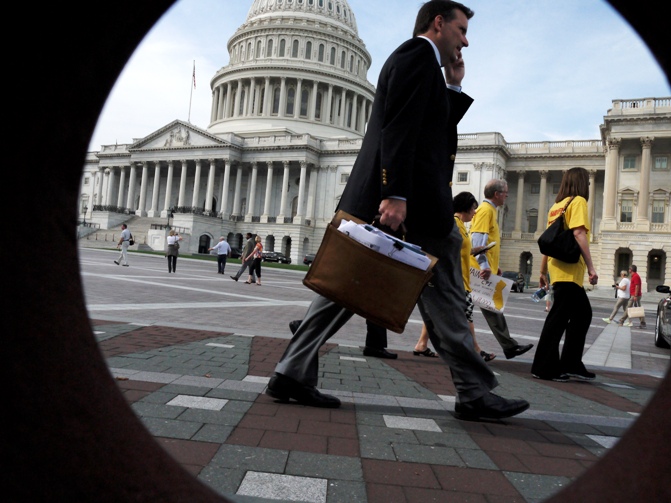
Unlike the budget dispute, the debt dispute will have major repercussions in the US if no quick resolution is found.
The ‘shutdown’ of the United States government following the inability of the Republican-dominated House of Representatives and the Democratic-majority Senate to agree on federal spending is not quite as major a threat as it sounds.
True, it will likely cost $300 million a day and might well hinder economic recovery in the US.
But it will not be catastrophic -- given the record of a similar shutdown in the mid-1990s, which came during the long economic expansion of the Clinton presidency.
For one thing, most essential services are exempted.
Other loopholes in the shutdown regulations mean that most US federal employees will be at work as usual.
. . .

If the shutdown lasts over a week, then there might be a significant growth slowdown. But, altogether, it is not catastrophic.
Most Americans will barely notice it.
However, the existence of the shutdown is still bad news.
And that is because it reveals the degree to which politics in Washington DC has become confrontational and detached from the needs and requirements of the economy.
The extreme wing of the Republicans -- generally known as the Tea Party after a famous incident of defiance during America’s revolutionary war -- has in essence dug in its heels, and prevented the moderates in the Republican party in the House of Representatives as well as Democrats from moving ahead and finding a budget compromise.
. . .

The Tea Party, strongly opposed to the administration’s new healthcare initiative, is holding legislative approval of the budget hostage to its demand that the healthcare law be repealed.
Investors are worried that this pattern will be repeated in a short while, when the US government’s federal borrowing limit is supposed to be raised.
Unlike the budget dispute, the debt dispute will have major repercussions if no quick resolution is found.
In fact, the consequences will indeed be catastrophic.
According to the Congressional Budget Office, some time between October 22 and the end of the month, the US government will run out of ways to juggle its debt and have to take on some more.
. . .

However, the current ‘debt ceiling’, of $16.7 trillion, was hit in May.
The US Treasury has taken ‘extraordinary measures’ since then to avoid default.
But if the US Congress does not agree over the course of this month to raise the debt ceiling, then a default might be inevitable.
A sharp reduction in expenditure or an equally sharp rise in taxes will not be enough to let the US government meet its obligations.
It will have to default. And a default in US Treasury bills will have incalculable consequences for the US and for the financial system worldwide.
Finance has long depended on US Treasury bills as a riskless asset.
When that polite fiction is rudely called into question by an actual default, almost every market participant will have to re-evaluate their portfolio.
Payments and lending will freeze while that happens, and a ripple of defaults may pass through the global financial system.
Unless wiser counsel prevails, the world would be pushed back into crisis.
The problem with the shutdown is that it reveals that wiser counsel is thin on the ground in America’s capital.